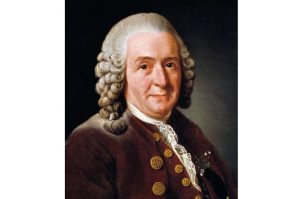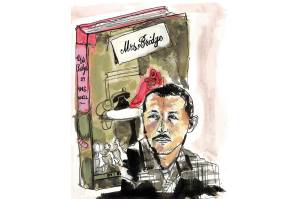It’s easy to forget, as we celebrate the 200th anniversary of her birth, how radical George Eliot actually was. The face that smiles tenderly at us in François d’Albert-Durade’s portrait seems to epitomize Victorian moralizing, but Eliot remains popular among contemporary American intellectuals. In an age in which fiction is partisan, she might be the only aisle-crossing novelist, a feminist to the left, a Zionist to the right. Yet her dramatic life story is oddly absent from the public imagination. Just how radical was she?
‘May I unceasingly aspire to unclothe all around me of its conventional, human, temporary dress, to look at it in its essence and in its relation to eternity,’ wrote Marian Evans, or Mary Ann Evans as Eliot then was (she changed her name repeatedly): a provincial Warwickshire girl, yet to meet the urban sophisticates who were to change her life. But what a vow! You can sense her longing for intellectual exploration, and her ambition, too. She was intensely religious, but aged 21 she stopped believing in God. Overnight she refused to go to church anymore — witness already the powerful convictions that would not fit with authority, in this case the male authority of her father. There was a row and her father threatened to evict her. Over time a compromise was reached — she would go to church but think free thoughts privately. At the age of 25 she translated David Strauss’s Das Leben Jesu into English, a radical text that cast Christianity as historical myth.
But the event that defined her image for decades was her decision to live openly with the married George Henry Lewes, who was legally unable to divorce. Society closed its doors instantly, women stopped visiting her, her family broke off contact with her for 25 years. And what of her fiction, which rescued her from her ostracized existence, winning her fame and glory? She’d had enough of cozy bucolic representations of the rural poor as pretty people with flushed faces sleeping in haystacks; so her early Scenes of Clerical Life (1857) features an alcoholic wife-beater; in Adam Bede (1859), an unmarried young woman murders her baby. In the later Middlemarch (1871), the subject matter is less controversial but the instinct to question is still there. Consoling in tone, those famous authorial addresses to the reader are also mind-expanding. It’s a reflex Eliot can’t resist.
Here’s one on James Chettam’s attitude to Dorothea in Middlemarch: ‘Sir James had no idea that he should ever like to put down the predominance of this handsome girl, in whose cleverness he delighted. Why not? A man’s mind — what there is of it — has always the advantage of being masculine — as the smallest birch-tree is of a higher kind than the most soaring palm — and even his ignorance is of a sounder quality.’ With gentle irony Eliot satirizes the received wisdom about men’s minds, and the reader scarcely notices she’s done it.
What did she think about women in her own time? Here her stance becomes fascinating. She was herself bolder than almost all contemporaries in terms of what she had done. But she was no outspoken feminist, and she saw women’s power to nurture as precious. There was a contradiction here, between her views and her own life — she was childless, immensely ambitious and successful. It’s a contradiction that won’t resolve. Her work remains her best mouthpiece.
The novels repeatedly diagnose the brutal limitations placed on women’s lives. From Maggie Tulliver in The Mill on the Floss (1860) to Dorothea, Eliot continually presents clever women full of hope but frustrated by the world they inhabit. Daniel Deronda (1876) is the most feminist of all. Eliot may have named the book after the hero, but it’s the heroine who steals the show. Gwendolen is a breathtakingly original and strange creation (what other heroine in a 19th-century novel strangles her sister’s canary as a girl?), a product both of parental overindulgence and the sphere in which young girls become ‘accomplished’ in preparation for marriage. Precariously dependent on admiration for happiness, she is a directionless egotist, marooned by her narcissism. When her family lose their money, she’s left with ‘accomplishments’ only, without any agency. What follows is marriage to Grandcourt, one of the great rotters in Victorian fiction.
Eliot kept moving in her thinking. She saw the limitations of life for women and wrote better about them than almost anyone. But like some jack-in-the-box, if you try to push her into a position, she’ll spring back with a view that doesn’t fit. Reality was always more complicated for her than ideas.
Her rejection of religion says it all. She quarreled with her father only to later regret her behavior. She appreciated the spiritual needs that were parent to religion. At the end of her life, the woman who had lived unwed for 24 years with George Henry Lewes rapidly married, after his demise, a younger man. What’s more, they married in a church.
Kathy O’Shaughnessy is the author of the novel In Love with George Eliot (Scribe). This article is in The Spectator’s January 2020 US edition.


















